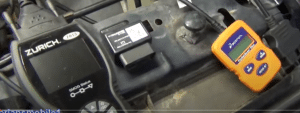What is OBD?
On-board diagnostics (OBD) is the car’s innate ability to test and examine its own condition. If the car’s engine (or other components) is malfunctioning, a code detailing the problems is generated. This is made feasible by several sensors installed throughout the car.
In this article, we will be discussing OBD1 vs OBD2. OBD1 and OBD2 scanners are the most common ones available on the market. Features, connection, usability, and standards are all areas where the two technologies diverge.
The original On-Board Diagnostics (OBD1) system was the first of its kind. The field of automotive science has also advanced greatly alongside the rest of technology. OBD2 is now standard on virtually all automobiles. Let’s have a look at the differences between them.
OBD1
OBD1 was utilized from 1991 to 1996 for the vast majority of automobiles. Considering the constraints of OBD1, its analysis was restricted to a small subset of possible issues like emissions and discharge system problems.
The obvious limitation of OBD1 is that it’s manufacturer specific. Even if two brands share the same problems, a single scanner won’t be able to fix both of them.
OBD1 scanners have only basic coverage. They may analyze data from the engine’s onboard diagnostics system, read and track performance, and generate alerts should any problems be detected.
However, these notifications simply give you the bare essentials. They report the problem without specifying its location. But there are certain upsides to considering them. As a result, they can extend the life of the engine.
OBD2
OBD2 is also much more comprehensive and universal standard that allows a better and more practical diagnostic tool for mechanics and DIYers. This resulted in the rapid obsolescence of ODB1. The more intuitive OBD2 system performs comprehensive diagnostics, whereas OBD1 only examines a limited set of systems.
OBD2 connector scanners are compatible with the vast majority of cars manufactured after 1996, including certain hybrids and electrics. Depending on the OBD2 scanner you choose, you’ll have access to both standard and advanced functionality.
OBD2 is the current official standard code for the industry. Since OBD2’s introduction in 1996, it has been standard equipment in all mass-produced vehicles. This is because real-time diagnostics are more accurate. OBD2 also supports ABS & SRS features.
OBD1 was developed to aid automakers in creating better vehicles in the future. After that, OBD2 was made to benefit both big businesses and regular car owners.
The scan tool also differs between OBD1 and OBD2, with the latter providing far more detail. While problem codes are not yet standardized, most scan tools will let you choose the vehicle’s manufacturer and model so that you get the right results.
More sophisticated scanning methods aren’t necessarily dependent on this primary input. Engine misfires, low fuel pressure, poor engine performance, dead batteries, and other sensor problems can all be diagnosed with the right OBD2 diagnostic tool.
ECU coding, tuning, and other forms of control over different vehicle systems are also possible with the help of OBD2 scan tools. Vehicle issues can be diagnosed by the owner with the help of an OBDII scanner even though they’re not a professional mechanic.

OBD1 Vs. OBD2
When OBD1 was introduced, it was the pioneer in standardizing a diagnostics protocol for all vehicles. Unfortunately, this system was never fully universal; rather, it required scan tools that are model-specific in order to deliver generic DTCs/error codes because OBD was only required to be part of a car sold in California.
This problem was fixed by OBD2, which made it possible to use a more universal scan tool on vehicles of any make or model manufactured after 1996. Mechanics, DIYers, or simply car owners alike can benefit from these scan tools since they have evolved from wired scanners with generic data to wireless scan tools that generate very detailed fault codes.
This was all about OBD1 Vs. OBD2. I hope this article will be helpful for customers who are seeking to buy a OBD scanner.

As a mechanical engineer, it’s easy for David to explain the functionality of the tool. David test most of the tools before writing a review. its help him to learn something new and suggest the best product for you.






